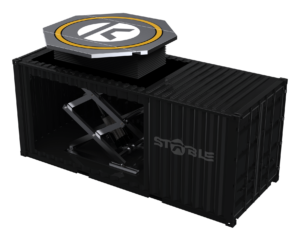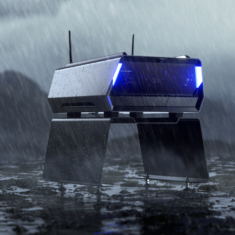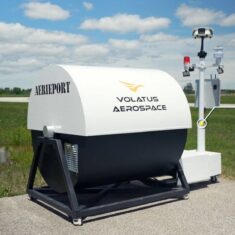Drone Ports & Landing Pads
Drone docking stations and drone ports allow UAVs (unmanned aerial vehicles) to take off and land, and also provide a recharging capability for the aircraft. They are typically designed for battery-powered multirotor and eVTOL drones, as pure fixed-wing platforms require runway space to land. Some drone docking stations also provide an enclosure that stores the drone and protects it from rain, theft and damage. These enclosures may also be used to store packages for delivery drone services.
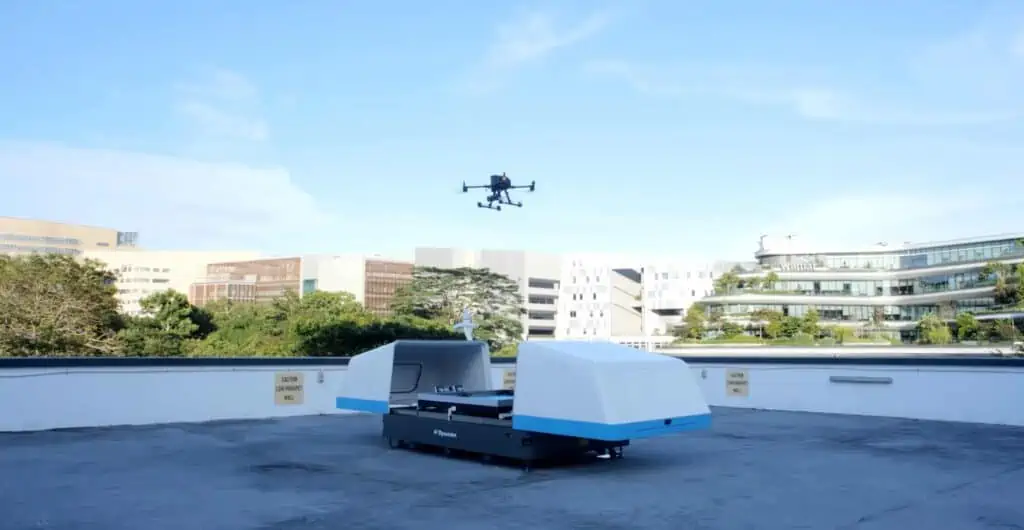
DBX-G7 Drone Station by H3 Dynamics
Automated Drone Stations
Drone stations help mitigate the low flight endurance and long recharge times of battery-powered UAVs by automating the recharge process, which means that a human pilot is not required. Drone ports may help enable a range of autonomous and BVLOS (beyond visual line of sight) missions, such as ISR (intelligence, surveillance and reconnaissance), mapping, industrial inspection, and package delivery.
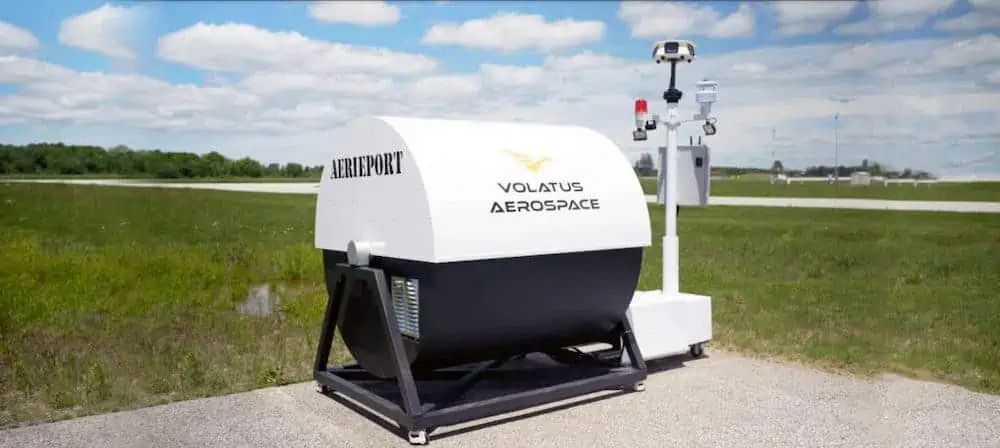
AERIEPORT by Volatus Aerospace
UAV docking stations may include the facility to download flight logs and data from the drone’s sensors and payloads. They may also include edge computing systems that can process this data, thus allowing operators to get results quickly in the field. Other components may include solar panels, weather stations to ensure conditions are safe for takeoff, and a battery management system (BMS) that ensures battery conditions are ideal for maximum efficiency.
Stabilized Landing Platforms
Drone ports may be mobile or fixed in place, and may also be installed on naval vessels and moving vehicles. Stations that have to contend with a constantly moving platform may include a self-leveling landing pad that ensures that the drone will always land on a stable surface.
Drone landing pads may utilize a variety of technologies to ensure that drones land precisely and safely. These include computer vision, RFID tags, ultrasound, and infrared LEDs.




